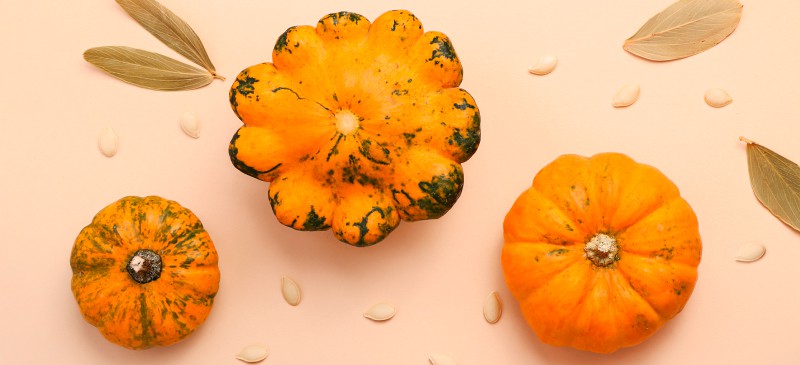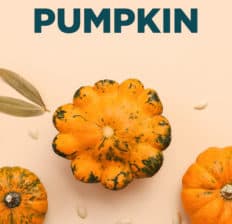This Dr. Axe content is medically reviewed or fact checked to ensure factually accurate information.
With strict editorial sourcing guidelines, we only link to academic research institutions, reputable media sites and, when research is available, medically peer-reviewed studies. Note that the numbers in parentheses (1, 2, etc.) are clickable links to these studies.
The information in our articles is NOT intended to replace a one-on-one relationship with a qualified health care professional and is not intended as medical advice.
This article is based on scientific evidence, written by experts and fact checked by our trained editorial staff. Note that the numbers in parentheses (1, 2, etc.) are clickable links to medically peer-reviewed studies.
Our team includes licensed nutritionists and dietitians, certified health education specialists, as well as certified strength and conditioning specialists, personal trainers and corrective exercise specialists. Our team aims to be not only thorough with its research, but also objective and unbiased.
The information in our articles is NOT intended to replace a one-on-one relationship with a qualified health care professional and is not intended as medical advice.
Top 5 Reasons to Eat More Pumpkin (Benefits, Nutrition & More)
November 24, 2022

Whether you’re using canned pumpkin to make homemade pumpkin bread or toasting pumpkin seeds after carving one at home, you might be curious about what type of pumpkin nutrition benefits there are.
Considering it’s one of the greatest sources of vitamin A, plus rich in other antioxidants and nutrients like fiber, pumpkin benefits include the ability to help support skin and eye health, keep blood pressure levels healthy, and even fight certain types of cancer.
Pumpkin Benefits
Is pumpkin a vegetable or fruit?
According to the Better Health Foundation, although we typically think of pumpkins as vegetables (since they are a type of squash), they are technically fruits. That’s because fruits are edible products of seed-bearing, flowering plants.
From a botanical standpoint, a pumpkin is a cultivar of winter squash that usually comes from the Cucurbita pepo or Cucurbita maxima plants. It’s a member of the Cucurbitaceae plant family, which means it’s related to veggies and fruits like watermelon, zucchini and cucumber.
Less commonly, edible pumpkins are also sourced from squash cultivars including C. argyrosperma and C. moschata.
Not only can you eat the “flesh” of pumpkin (the smooth, orange filling), but you can also enjoy the seeds and even the leaves and juices from the plant, which are full of nutrients, including healthy fatty acids.
Pumpkins are thought to be native to North America, specifically Northeastern Mexico and the Southern U.S.
They are actually one of the oldest domesticated plants. It’s believed that tribes native to North America have been growing them since at least 5,000 BC.
What are the benefits of eating pumpkin? Here are five reasons to include pumpkin in your diet:
1. Very High in Vitamin A/Beta-Carotene and Other Antioxidants
According to one review focused on pumpkin nutrition benefits, this type of squash “contains several phyto-constituents belonging to the categories of alkaloids, flavonoids, and palmitic, oleic and linoleic acids. Various important medicinal properties including anti-diabetic, antioxidant, anti-carcinogenic, anti-inflammatory and others have been well documented.”
Beta-carotene is one type of carotenoid antioxidant that is responsible for pumpkins’ signature orange color. Beta-carotene is found in cancer-fighting fruits and vegetables that may help reduce the risk of some types of cancer, including colon and prostate cancer.
Studies have shown that eating produce rich in vitamin A/beta-carotene may not only defend against cancer, but also protect vision, prevent macular degeneration, and boost heart and neurological health. This is due to vitamin A’s ability to counteract oxidative stress and free radical damage, which harm healthy cells and neurons.
One study even concluded that high-beta-carotene diets can lower risk of all-cause mortality. Additionally, there’s evidence that high beta-carotene consumption can offer protection against obesity and risk factors for metabolic syndrome.
It’s thought that vitamin A is a potent regulator of adipose (fat) tissue development and is therefore important for obesity prevention.
2. Good Source of Vitamins C and E
Vitamin C that is found in pumpkin can help protect cells and tissues from damage — plus it supports synthesis of collagen protein, which forms and strengthens skin and other connective tissues. Vitamin C is also important for healthy immune system function, cancer prevention and neurological health.
Another vitamin with antioxidant effects that is found in pumpkin is vitamin E. Diets rich in vitamin E are linked to a reduced risk for heart disease, hormonal problems like PMS, Alzheimer’s disease, and skin issues like acne and wrinkles.
Vitamin E also seems to help prevent damage from free radicals and may decrease the risk of certain types of cancer, including colorectal and prostate cancer.
Pumpkin seeds are also sources of cancer-fighting compounds, which is why these seeds have been used in folk medicine as remedy for kidney, bladder and prostate cancer, along with other disorders such as erectile dysfunction, for centuries. Like vitamin C and vitamin E, pumpkin seed oil that is made from the seeds can help defend against skin damage and slow-healing wounds due to antioxidants, such as tocopherols, fatty acids and phytosterols.
3. Can Help Regulate Heart Health and Blood Pressure
Each one-cup serving of cooked pumpkin provides about 16% of your daily potassium needs. Potassium is an electrolyte that many adults lack in their diets, considering it’s primarily found in veggies and fruits such as bananas, potatoes, squash and avocados.
Consuming plenty of potassium offers benefits such as lowering the risk of high blood pressure, heart disease and having a stroke. It counteracts the effects of sodium in your diet, which many people eating a “standard American diet” consume too much of, helping to prevent hypertension.
In addition to potassium, pumpkin and pumpkin seeds provide other nutrients that promote cardiovascular health, including fiber and vitamin C. Fiber can promote healthy cholesterol levels, while vitamin C defends against oxidative stress.
4. Provides Fiber, Which Supports Metabolic and Gut Health
Studies show that eating a diet rich in plant foods, especially those high in antioxidants and fiber, helps decrease the risk of a number of chronic diseases — including metabolic syndrome, obesity and type 2 diabetes.
Fiber aids in gut health by promoting elimination and preventing constipation. It also “feeds” healthy probiotic bacteria in the gut and helps them thrive, while also helping to manage blood levels.
Another benefit of a high-fiber diet is that it helps make you feel full, which can allow you to control your calorie intake more easily and potentially manage your weight.
5. Provides Manganese and Copper
Adding pumpkin to your diet is beneficial for bone health because manganese helps defend against loss of bone density and fractures. Additionally, manganese has some anti-inflammatory properties and plays a role in cognitive, metabolic and joint health.
Copper is another mineral found in pumpkin that has a number of roles in helping form hemoglobin and collagen in the body. Copper also helps with synthesis of several enzymes and proteins that are involved in energy metabolism, DNA synthesis and respiration.
Related: What Is Hubbard Squash? Nutrition, Benefits, Recipes & More
Nutrition Facts
There are many things to love about pumpkin nutrition — including that this “fruit” is high in fiber, low in calories, basically fat-free, and full of vitamins and minerals, including vitamin A, vitamin C, potassium, copper, manganese and more.
Pumpkin seeds (also called pepitas), on the other hand, are high in manganese, iron, zinc, magnesium, phosphorus, amino acids and even some antioxidants, such as phenolic compounds, vitamin E and carotenoids. Even the peel of pumpkin provides anti-inflammatory compounds that can help fight disease.
Additionally, pumpkin seed oil is created from this plant, which is a thick oil pressed from roasted pumpkin seeds that is high in beneficial fatty acids, such as oleic acid and alpha-linolenic acid.
According to the U.S. Department of Agriculture, one cup (approximately 245 grams) of boiled, unsweetened, mashed pumpkin contains about:
- 49 calories
- 12 grams carbohydrates
- 1.8 grams protein
- 0.2 grams fat
- 2.7 grams fiber
- 12,231 international units vitamin A (245% DV)
- 11.5 milligrams vitamin C (19% DV)
- 564 milligrams potassium (16% DV)
- 0.2 milligrams copper (11% DV)
- 0.2 milligrams manganese (11% DV)
- 0.2 milligrams riboflavin (11% DV)
- 2 milligrams vitamin E (10% DV)
- 1.4 milligrams iron (8% DV)
- 73.5 milligrams phosphorus (7% DV)
- 22 micrograms folate (6% DV)
- 22 milligrams magnesium (6% DV)
- 0.1 milligrams thiamine (5% DV)
- 1 milligram niacin (5% DV)
- 0.1 milligrams vitamin B6 (5% DV)
- 0.5 milligrams pantothenic acid (5% DV)
- 36.7 milligrams calcium (4% DV)
- 0.6 milligrams zinc (4% DV)
Is pumpkin a carb or protein?
One serving of pumpkin, equal to about 1/2 cup to one cup, contains more carbs than protein. While it’s relatively high in carbs for a veggie (which is how it’s treated, rather than a fruit), it’s also high in fiber. This lowers its net carb count.
For example, one cup of pumpkin has about nine grams of net carbs, which makes it moderately high in carbs if you follow a low-carb diet but not very high overall.
Pumpkin is not a very high source of protein, although it does contain several grams per serving. If you follow a plant-based diet and are looking for plant proteins, better option include beans, legumes, whole grains, nuts and seeds.
Pumpkin seeds, as opposed to the flesh of the fruit, are a bit higher in protein.
How to Add to Your Diet
In grocery stores and farmers markets you can find both fresh/whole pumpkins and canned pumpkin puree. The canned type is easier to use — you simply pop open the can, and it’s ready to go — however freshly carved and cooked pumpkin may taste a bit better and pack in even more antioxidants.
If you do choose to buy and cook whole pumpkins, look for those that feel heavy for their size, are firm, smooth and have no noticeable rotting spots.
Pumpkin is used in a variety of cuisines around the world, including Chinese, Japanese, Korean, African, Cajun and Creole recipes. It pairs well with spices and flavors such as:
- cinnamon
- ginger
- cardamom
- turmeric
- nutmeg
- cayenne
- vanilla
- black pepper
Of course, in the U.S. it’s most popular during the fall when it takes center stage in recipes like pumpkin bread, lattes and muffins. It can also be used to make healthy desserts, puddings, soups, preserves and “butters,” and roasted and used in salads.
One secret benefit of using pureed pumpkin in recipes is that its natural sweetness and smooth texture can help cut back on the need for added sugar and fats like cheese, cream or oil.
Try some of these favorite pumpkin recipes:
- Pumpkin Spice Latte Recipe
- Gluten-Free Pumpkin Bread
- Pumpkin Marmalade
- Pumpkin Soup
- Spicy Roasted Pumpkin Seeds
Risks and Side Effects
Who should not eat pumpkin? If you’re allergic to other types of winter squash, avoid consuming pumpkin.
Like other canned goods, some canned pumpkin products are high in sodium, so stick to about one cup per day. You’ll also want to read ingredient labels carefully to avoid products with added sugar.
Conclusion
- Pumpkin is a type of winter squash that is technically a fruit. It’s an excellent source of vitamin A, plus supplies you with vitamins C and E, fiber, potassium, manganese, and more.
- Pumpkin nutrition can help support healthy eyes/vision, skin, a strong immune system, and cardiovascular, digestive and skeletal health.
- You can either purchase canned pumpkin puree (opt for the unsweetened type) or make your own. Use the flesh/puree in recipes including desserts, soups, pies, marmalades, muffins, breads and lattes.
- The seeds are also rich in healthy fatty acids and minerals. They can be roasted and snacked on or added to salads and trail mixes.













